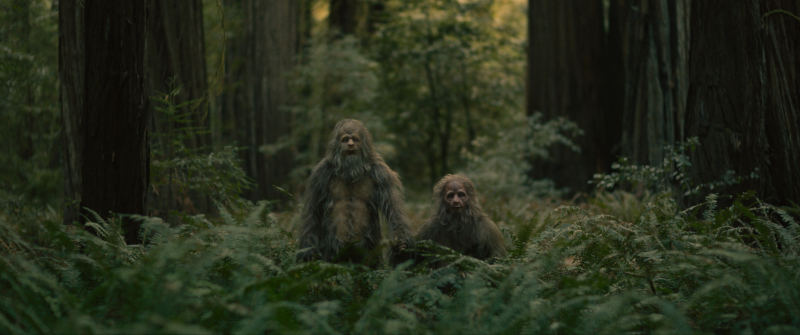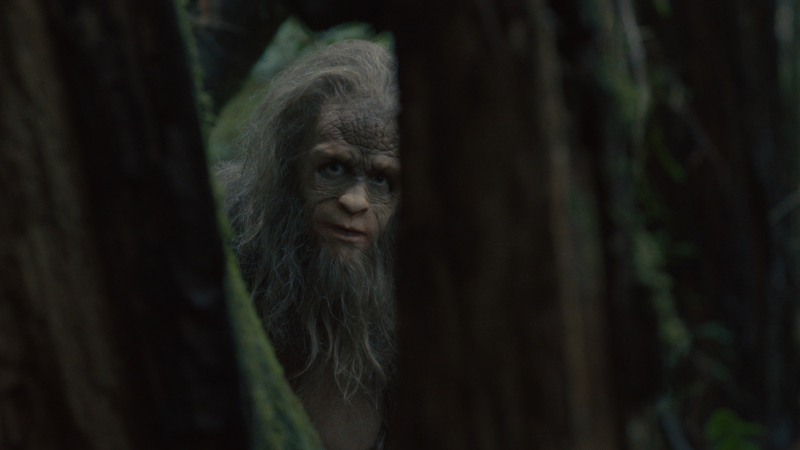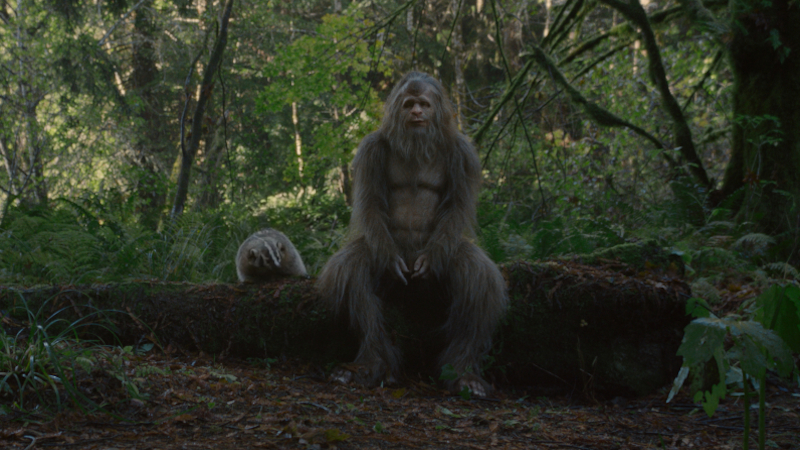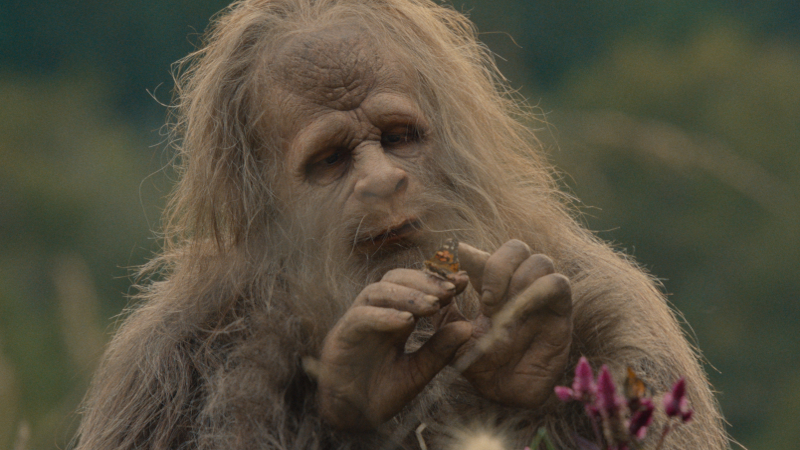Director – David & Nathan Zellner – 2024 – US – Cert. 15 – 88m
****
As recreated by actors wearing primate suits, a family of Sasquatches are photographed in the wild over the course of a year – on Blu-ray and Digital from Monday, August 26th, packed with more than three hours of UK exclusive special features
In the US and Canada, the Bigfoot or Sasquatch is a staple of American folklore; a primate alleged to live in various American woodlands habitats, an assertion supported by such dubious artefacts as the Patterson-Gimlin film, amateur footage of a Bigfoot female walking through a forest. It’s far from conclusive, and could well be a man in an ape suit.
There is, however, no doubt whatsoever that the four Sasquatches in Sasquatch Sunset are human beings wearing ape suits. The film doesn’t try to pass itself off as anything other than actors playing a family of the creatures, and uses no narration voice-over to tell the audience what to think. Rather, it follows its creatures through a year of their existence in the wild, from Spring through Winter. It isn’t attempting to prove the existence of these creatures one way or the other; rather, it’s an attempt to imagine what they might look like and how they might behave if they were (or are) real.

The piece has much in common with the opening The Dawn of Man segment of 2001: A Space Odyssey (Stanley Kubrick, 1968) and the original Planet of the Apes franchise (1968-73) in terms of the portrayal of the simians being realised by actors in prosthetics ape suits. Like the former but unlike the latter, the apes do not speak (although they certainly make vocal noises), so we are watching actors performing through these suits, a fascinating sub-craft of movie acting. In this instance, the four cast members had body casts made so that their customised ape suits would fit them perfectly. None of the prosthetics are more than 3/16” thick, as anything more would prevent the actors’ facial or other movements from showing through the suit skin.
It doesn’t feel like the technology has moved on that much since 1968, but where those earlier films underwent a considerable process of special effects R&D to get where they wanted to go, this one is able to pick up that technology and run with it. It may not be innovative in quite the same way, but it uses these now long-established techniques to great effect. If what you’re after is people playing apes in prosthetic suits, it’s as impressive as anything else in that vein ever to have graced the screen.
It is clearly a labour of love made by nerds fascinated by the Sasquatch phenomenon rather than a big budget, demographics-driven Studio film.

A group of our apes are portrayed: a female (Riley Keough from American Honey, Andrea Arnold, 2016), her mate (co-director Nathan Zellner who made Kumiko The Treasure Hunter, 2014) – referred to as the Alpha Male in the press blurb – a child (diminutive adult Christophe Zajac-Denek from four episodes of TV series Twin Peaks, 2017) and a second male (Jesse Eisenberg from The Double, Richard Ayoade, 2013; The Social Network, David Fincher, 2010; and much else). Although they never say a word, you very much get the impression of four distinct characters. The Alpha Male who on at least one occasion early on gets to have his way with the female. The female constantly wiping her crotch and sniffing her fingers. The other male, who seems to be more philosophical in his outlook. And the child, clearly in the shadow of the others.
The narrative, such as it is, is not exactly a story, even if it is framed by the four seasonal intertitles of Spring, Summer, Autumn and Winter; it’s more like a series of places the four creatures pass through, things they do en route in the course of everyday living – foraging and eating – and strange, out of the ordinary events that occur, some of them fatal. The creatures also interact with other forest animals – again, some of these encounters prove fatal.

All of the film was shot outdoors in the locations seen: none of it was recreated in a studio. It takes place in a mixture of forest, vegetation-strewn glades and pasture and, at one point, by the side of a lake. There are not that many wide open shots of vast hillsides or mountain ranges, which spectacular moments are well represented in the trailer. Much of the proceedings are shot in much more confined outdoor spaces, yet the whole exhibits a very real sense of landscape, even if some of that landscape is quite intimate and at times almost claustrophobic.
The pace is never rushed, yet even though you know you’re watching four actors in primate suits, there’s something strangely compelling about it all. Unlike both 2001 and Planet of the Apes, these simians aren’t there particularly to tell a story as such. It’s more as if the camera were following them around and capturing what was happening. The film conveys are striking sense of these creatures’ day-to-day existence and the many perils they face.

There clearly was a script, because the likes of Eisenberg and Keough were drawn in to take part in the piece by it, and speak well of it in the press blurb, but you suspect that an awful lot came out of the group rehearsals and on-the-shoot interaction with each other and the environment. At the end, a couple of them come across a Bigfoot museum and loiter poignantly outside, with no sign of humans anywhere.
It’s a highly original and striking outing which deserves to be seen.
Sasquatch Sunset is on Blu-ray and Digital from Monday, August 26th, packed with more than three hours of UK exclusive special features, following its release on Home Premiere in the UK from Monday, July 29th, and cinema release on Friday, June 14th.
It had its UK Premiere at Sundance Film Festival London on Saturday, June 8th, 2024.
Social Media tags
#SasquatchSunset
Twitter/X: @IconFilm
Instagram: @IconFilm
Facebook: @IconFilmUK
Trailer:
